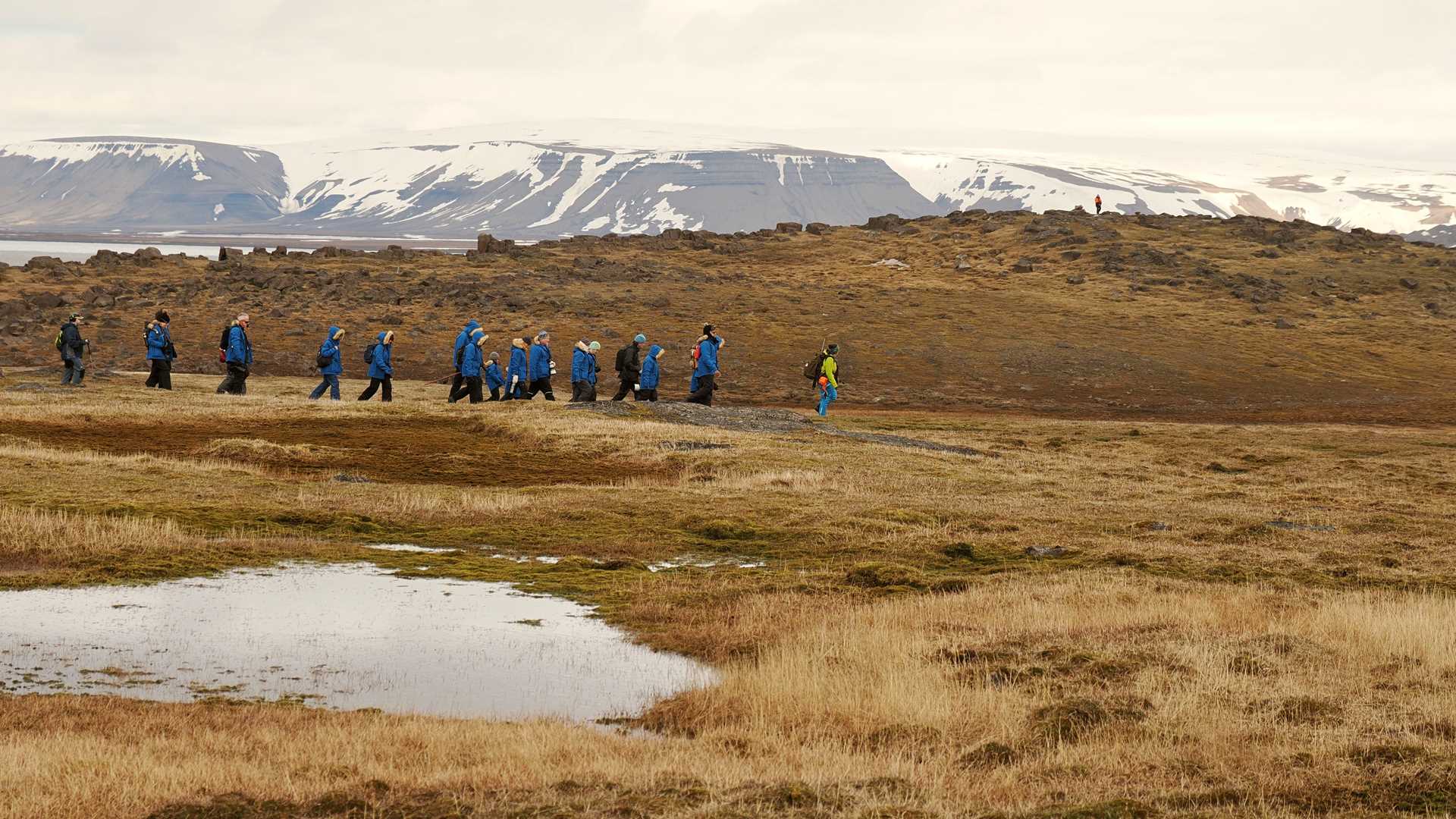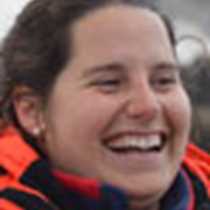East of Spitsbergen are two islands, Barentsøya and Edgeøya. Edgeøya is the third largest island in Svalbard, and it is part of the Søraust-Svalbard Nature Reserve. This was the perfect spot to start our Arctic expedition. The island is full of wildlife. Most of the snow has now melted, and life has been uncovered. Beautiful little lakes and small ponds create the perfect conditions for recently arrived migrating birds.
We arrived in Zodiacs to the beach, where waves wash up various algaes. The ocean connects Svalbard to the world and brings a variety of life up through the Arctic Ocean. Remarkable pieces of driftwood also arrive. It’s the only wood we will see here, as we are so far north and very far from forests and trees.
We started our exploration with different kinds of hikes. From the beach, we went up a small hill and found a long stretch of surprisingly lush tundra, many lakes, and a landscape dominated by plateau mountains and moors.
Exploring the landing, we found Svalbard reindeer antlers. As we walked farther in, we had good sightings of these fascinating Arctic mammals. The birdlife was very diverse and included purple sandpipers, red phalaropes, snow buntings, black guillemots, Arctic terns, pink-footed geese, red-throated loons, and even majestic king eiders.
Right at the landing, we jumped into our Zodiacs and traveled around the bay to see the unique walruses. A group rested on the beach and swam in the water. These incredible marine mammals have tusks that can grow up to one meter. A bull can measure up to 3.5 meters and weigh 1500 kg.
What a wonderful way to start our Svalbard expedition. Tonight, we will reach the ice edge. We are thrilled to see what we will encounter.







